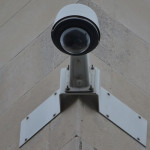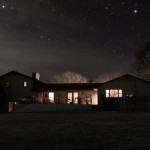Safety Tips For 4th Of July Holiday
With Independence Day fast approaching, many of us are making plans to celebrate. Whether it’s a family outing to the beach or a fireworks show, or simply a backyard barbecue at home, heed these safety tips to keep yourself and your loved ones safe.
Fireworks Safety
Fireworks are safest when admired from afar (at least 500 feet). Look for local public fireworks displays and try to secure a prime spot early (as these tend to be crowded events). If your city allows fireworks and you decide to light them at home, please follow these safety precautions:
- Keep fireworks away from small children.
- Follow the instructions on the packaging.
- Keep a water supply close by (better safe than sorry).
- The person igniting the fireworks should always wear eye protection.
- Light only one firework at a time.
- Never attempt to relight a “dud.”
- Store fireworks in a cool, dry place and away from children and pets.
- Never throw or point a firework toward people, animals, vehicles, structures, or flammable materials.
- Leave any area immediately where untrained amateurs are using fireworks.
Grilling Safety
What is summer without backyard barbecues? As much as we love grilling under the sun, injuries are all too common when using backyard charcoal or gas grills. To prevent injury and maintain safety, follow these tips:
- A barbecue grill that is in use should always be supervised.
- Never grill indoors (ex. inside a house, camper, tent or any enclosed area).
- Make sure everyone (including pets) stays away from the grill.
- Keep the grill out in the open, away from the house, the deck, tree branches, or anything that could catch fire.
- For the chef’s safety, use the long-handled tools especially made for cooking on the grill.
- Never add charcoal starter fluid when coals have already been ignited.
- Always follow the manufacturer’s instructions when using grills.
Beach Safety
If your beach visit includes swimming in the ocean, be sure to learn how to swim in the surf within the designated swimming area and only when/where a lifeguard is present. In addition, be sure to obey all instructions and orders from lifeguards.
- Check local weather conditions and look for any warning signs or flags that may be posted.
- Always swim sober and with a buddy.
- Young children and inexperienced swimmers should wear Coast Guard- approved life jackets.
- Protect the neck – don’t dive head first. Walk carefully into open waters.
- Keep a close eye and constant attention on children and adults while at the beach. Waves can cause someone to lose their footing, even in shallow water.
- Watch for aquatic life – water plants and animals may be dangerous. Avoid patches of plants and leave animals alone.
Rip Currents
Rip currents are relatively strong, narrow currents flowing outward from the beach through the surf zone, posing a potential hazard to swimmers. In fact, rip currents are responsible for many deaths and lifeguards rescues on our beaches. Any beach with breaking waves may have rip currents, so be aware of the dangers and remember these things:
- If a person is caught in a rip current, it is advised to swim parallel to the shore until out of the current. Once free, turn and swim toward the shore. If they can’t swim to the shore, they should float or tread water until free of the rip current and then head toward the shore.
- Stay at least 100 feet away from piers and jetties – permanent rip currents often exist near these structures.
Sun Protection
You should limit exposure to direct sunlight between 10am and 4pm and wear a broad-spectrum sunscreen with a protection factor of at least 15 (reapply often). Remember to stay hydrated by drinking plenty of water regularly (thirsty or not) and avoid alcoholic or caffeinated drinks. Protect your eyes by wearing sunglasses that will absorb 100 percent UV sunlight. Also remember to protect your feet – hot sand can burn them and glass and other sharp objects can cut them.
During hot weather, watch for signs of heat stroke – hot, red skin; changes in consciousness; rapid, weak pulse; rapid, shallow breathing. If it’s suspected someone is suffering from heat stroke:
- Call 911 and move the person to a cooler place.
- Quickly cool the body by applying cool, wet cloths or towels to the skin (or misting it with water) and fanning the person.
- Watch for signs of breathing problems and make sure the airway is clear. Keep the individual lying down.
Share your own safety tips with us on Facebook, Google+, Twitter, LinkedIn, and Pinterest!
Don’t forget! We will be closed on Wednesday, July 4, 2018 for Independence Day. We apologize for any inconvenience this may cause. From everyone at SecurityCamExpert.com, we wish you a safe & happy Independence Day!
PTZ Cameras: The Basics
When it comes to security cameras, there are various types that work better in certain situations than others. Thanks to their specialized functions, PTZ cameras are ideal for monitoring large, high-traffic areas.
PTZ stands for Pan, Tilt, and Zoom, which means these security cameras can provide improved surveillance. These functions can be controlled manually (via monitoring software or a joystick) or automatically (via camera management software). Actively keeping an eye on the feed and the ability to manipulate the field of view means security staff can respond to any incidents that may arise quickly.
When employing camera management software, you have the option of setting up guard tours, which enables the camera to automatically move to set locations on a schedule. In addition, some PTZ security cameras offer auto-tracking, which can automatically follow a moving target (such as a person or car).
How Does PTZ Work?
Pan
- The camera can swivel left and right for a wide area of coverage.
- Pan can range up to a complete 360 degrees or less.
Tilt
- The camera can tilt up and down for a wide vertical range of coverage.
- Tilt will vary by camera model, with a maximum of 180 degrees.
Zoom
- Optical zoom physically adjusts the camera lens (by changing the focal length) to zoom in and out (allowing the camera to maintain image quality).
- The amount of optical zoom is expressed as #x (ex. 18x), which represents how much the camera can zoom (change the lens focal length).
- Digital zoom blows up the image using software. This often results in pixilated images when zoomed too far, and thus, is not recommended.
As previously mentioned, PTZ cameras are ideal for surveillance of large areas including parking lots, common areas in schools or businesses, and convention centers. You may monitor the overall area while zeroing in on any suspicious activity. When paired with fixed network cameras that handle important locations such as entrances and exits, you can create a very flexible and functional surveillance system. With the fixed cameras maintaining an eye on vital points, the PTZ cameras are free to move around as needed. Furthermore, PTZ cameras are available for indoor or outdoor use in a variety of styles (but most commonly dome style).
Do you employ PTZ cameras on your own property? Share your own tips for utilizing these cameras with us on Facebook, Google+, Twitter, LinkedIn, and Pinterest.
Browse our selection of PTZ security cameras and more to suit your surveillance needs. Visit SecurityCamExpert.com or call 888-203-6294 today!
Protect Your Home
As we embark on the summer season, home security is emphasized. The long days and warm weather call for later nights, weekend getaways, and vacations. Whether you stay home or not, up your home security with these helpful tips.
Exterior Doors
With several different points of weakness (ex. handle, lock, hinges, frame) an exterior door is a common target for burglars. Sliding doors and French doors present even more weaknesses.
- Invest in a sturdy deadbolt lock – the spring-latch lock on your door handle is easily compromised.
- Install door armor kits on exterior doors, which usually include 3″ screws to replace short screws that come with door hardware, hefty strike plates for handles and deadbolts, and metal framing to place around the hinge and handle/lock hardware. This helps to reinforce the weak points of your door and safeguard against intruders.
- Add auxiliary locks to sliding doors, such as loop locks, security bars ( also known as sliding door polls or Charlie bars), or vertical bolt locks.
- Add a security bar to French doors to prevent kick-ins. While they may not be visually appealing, they are effective.
- With French doors, and most doors in general, make sure all of your hinge pins are interior-facing to avoid giving burglars easy access without force.
- Glass doors should be enforced with security film. This prevents glass from being easily broken.
Windows
Luckily, there are numerous ways to increase window security, whether they are old or you are installing new windows.
New windows:
- Choose reinforced (tempered or laminated) glass or acrylic (polycarbonate) windows. These are much harder to break than traditional glass windows and can help deter criminals from continuing after the first attempt at breaking in.
- Choose multiple panes of glass instead of one large pane. Multiple glass panes provide added strength and durability.
Old Windows:
- Add after-market window locks to your built-in window locks. These provide an easy and inexpensive way to prevent windows from being forced open. Depending on the style of your window, you may need double hung window locks, sliding window locks or locks for casement windows (sometimes called crank windows).
- For additional protection, exterior windows bars may be added. Aside from protecting your windows, most of these window bars come in decorative designs to accent the style of your home.
- As previously mentioned, security film can be added to windows to decrease the likelihood of break-ins (thicker film provides the highest level of protection).
Garage Doors
Unfortunately, an attached garage door can be easily compromised, and garage door security is often overlooked. What is especially troubling is that after gaining access, burglars can quickly shut the garage door behind them and take their time rummaging through your home without being seen.
- Refrain from leaving garage door openers in your vehicles. It may seem inconvenient, but it is worth the security.
- Secure your garage door emergency release to prevent easy intruder access. You may fasten it with a zip tie (which can be broken by yanking the release cord) or place a barrier between the top of the door and the release.
- A garage door sensor can alert you when your garage has opened. Newer garage door openers have this feature built-in as well as an auto-closing feature that will close your garage door after a long period of time.
- A deadbolt on the door between your garage and home will help to prevent further intrusion. You may want to also install a peephole viewer on this door to make it easier to inspect the garage without opening the door.
- Install a bright, motion sensing light in the garage to bring attention to an open garage door.
Make Your Home Look Occupied
Regardless if you are home or not, you want to make it look like your home is occupied. An unoccupied home is a prime target for burglars.
- Use strategically placed lights and lamps with timers. Lights turning on and off in different rooms will make it appear as if you are home.
- Leave a television or radio on at moderate volume. Noise will make criminals think you are home, and the light from the television mimics activity.
- Leave some curtains or blinds open. This is helpful if you are using light timers or a television to cast light. It can also be helpful should police or a neighbor need to take a look into your home.
Perimeter Security
Some of the best tactics are not thought of as prevention techniques.
- Get a dog. A barking dog may make enough noise to bring attention to an approaching burglar and deter them from proceeding.
- Invest in a home security system and signage. This may deter them from targeting your home, and if it does not, you know your home is protected and that police will be alerted in a timely fashion.
- Outdoor lighting is a great way to keep intruders away. Darkness allows intruders to sneak around your property unnoticed, but dusk-to-dawn porch lights and motion-activated lights around your perimeter help to increase visibility.
- Keep a car parked in the driveway. This makes it seem that someone is home.
- Maintain your landscape and keep bushes and shrubs near windows trimmed to minimize hiding spots. You may even consider planting thorny or spiked plants (ex. blackberry bushes, holly, juniper) to prevent burglars from getting too close.
Have your own tips to share? Connect with us on Facebook, Google+, Twitter, LinkedIn, and Pinterest!
Need help finding the right home security system for you? Visit SecurityCamExpert.com to browse our selection of surveillance systems or call 888-203-6294 today!



